Tom Lochtefeld – The Godfather of modern surf parks

Tom Lochtefeld is the OG wave pool geek and a core surfer. For the past 30 plus years, he’s found ways to have fun and surf outside of the ocean. He fixed a cable to the rear-wheel-drive system of a Dodge truck to make a foil wave (a concept that began in 1987!) For this and many other reasons we like Tom. But for a long time, he wouldn’t talk to us. We were shattered. But he later told us via email that he didn’t want to promote “vapor waves” – that is, planned wave pools that are just artists’ renderings. And now that he’s in full deployment of his SurfLoch system in Palm Springs and throughout the world, he agreed to chat.
Beyond the creation of systems like SurfLoch, he co-founded Raging Waters waterpark and invented the FlowRider. Through the early nineties, he built WaveHouse which was the first place surfers could gather in a dedicated space to ride a human-made wave – a ‘sheet’ wave in reality.
As Surf Park Management CEO Skip Taylor says, “Tom really deserves to be recognised for all his work in this field as the Godfather of modern surf parks. Tom’s extensive background in the surf park business and making wave pools of all types shows he’s super passionate about it.“
We interviewed Tom on what he’s doing today, how he got here and in the process got a rare peek into some of the mystery projects that laid the foundation for many of the wave pool designs we see today.
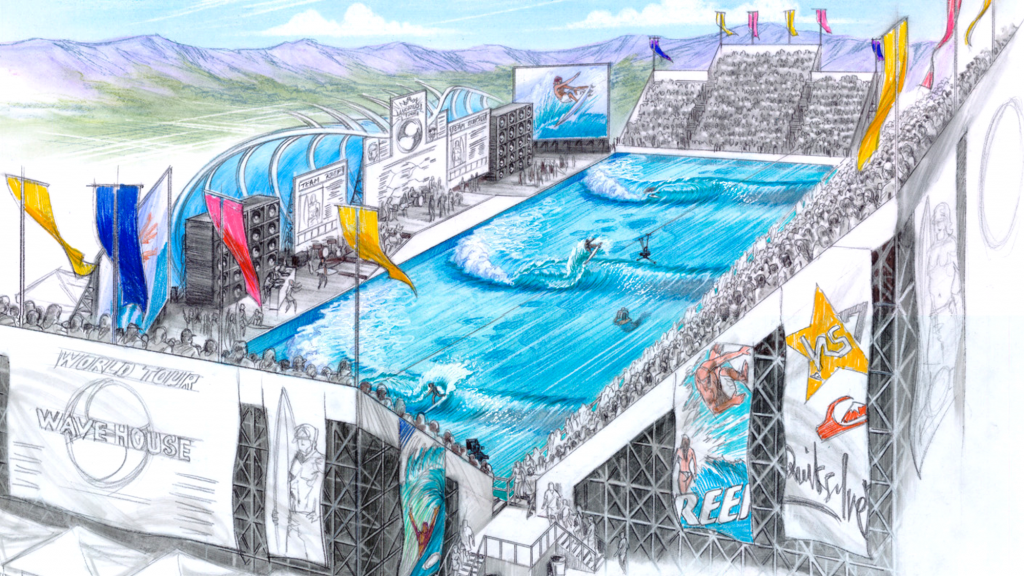
You were dormant for a while and now you’re back big time. Why do these things take so long?
I never went dormant. I never stopped working. But what happens on these projects, because they take years to get ready there are so many things that can happen in that process. Anything can happen. So we’ve developed these smaller venues. We were able to customize and build a back yard wave pool for one of our more affluent clientele. It’s epic. It’s a bit bigger than an Olympic swimming pool. We have our wave dampening so we don’t have to wait for the water to calm down. We can keep running. And then I have another project in Amsterdam and we have several in shopping malls and two in Spain, one in Munich that just got approved.
How long does it take to build a wave pool?
If everything goes without a hitch it takes a year. If you have a really good contractor you can do it in as short as nine months, but then it’s only if you have an epic contractor. Companies don’t have brochures for wave pools with a standard cost. You can’t because there are so many variables outside of your control. Then there are so many site issues too. Are you digging into rock, sand, water? It all depends on what’s there when you dig down to build the pool.
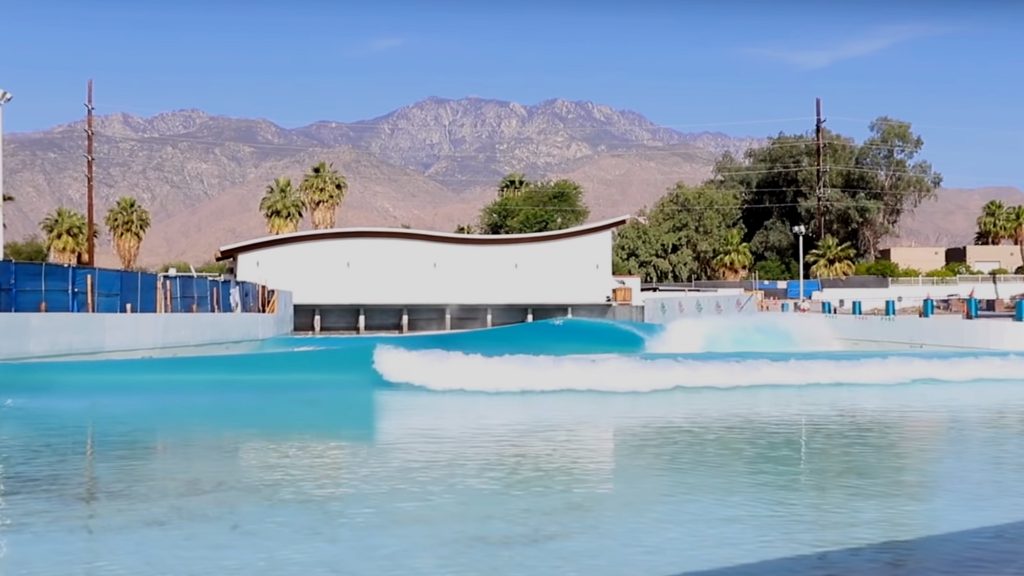
In this space there is so much growth, how is it finding someone to build a pool? Are contractors booked out?
There’s been one pool builder who has worked for us in Palm Springs and in the Northeast. They (RDC Design/Build) are out of Florida and they are really up-to-speed on what to do. Normally you want the larger, commercial pool builders. It’s a different animal when you start to get into bigger pools. The concrete pours can be difficult.
Did your work with Flowrider prepare you for this?
Totally. For every 100 people that contact us about a project, 99 never go through. And then the size of the project, as that increases so does the chance of it not going through. We can do our smaller pools under $10million but then according to site issues and soil, etc. the cost goes up.
Share some early experiments
One guy I want to give credit to is Chuck Sauerbier, a very creative guy. We go back 35 years and he was one of the original founders of the moving-plow concept. Chuck and I built the first ones back in 1987 in a lake. We flipped over a car and put a tow rope on the drive chain – basically what Slater is doing now. We did it up at Lake Cunningham in San Jose at Raging Waters. I built it inside the plunge pool back in 2005.
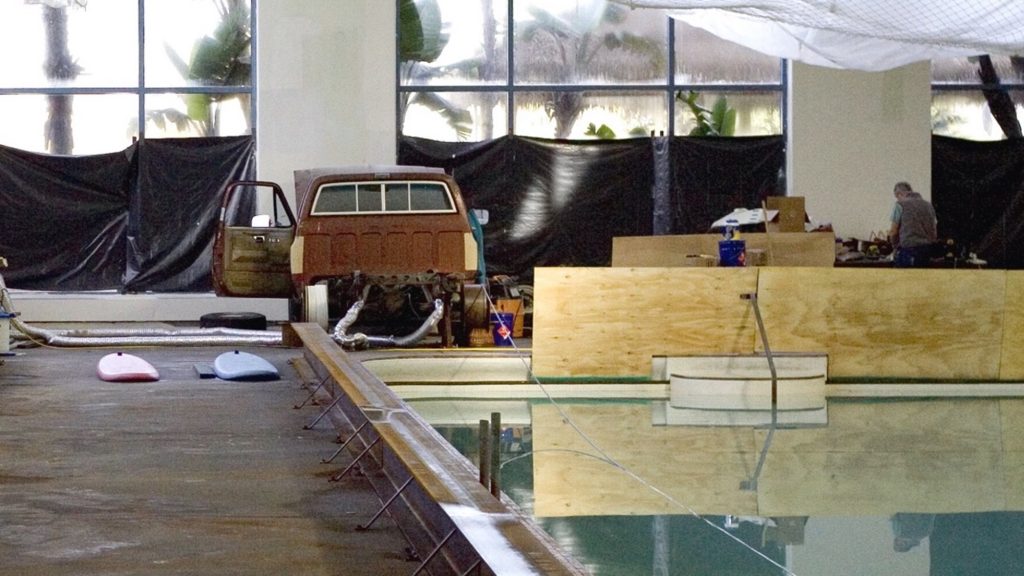
Flowrider is hugely successful. What’s the history to it?
Doing a surfing attraction was always my focus. And what the engineering and resources would allow was what led to the Flowrider. The tech wasn’t there for a wave pool at that time. As I developed waterparks I wondered what would be the most economic and best use of space and operating costs and putting those elements together. I logically deduced the Flowrider because what the surfer needs is just the surface of a wave to ride on. So let’s just skim off the surface and make something. I wanted to make a wave pool at the time and thinking it through and I thought, ‘wow that’s gonna be two megawatts.’ So if I do the surface I can get it down to 100 kilowatts. And that’s why I did the Flowrider first because it was economical and the waterparks wanted it. And then I kept evolving the product and then it became the FlowBarrel. But the FlowBarrel was so big and so it was not as economically viable. So to make it economically work I made WaveHouse in 2000 with the Swatch Tour. I would give people little tokens that said “one free ride at WaveHouse with this token.” Then we did one in Durban, Santiago, Singapore and that’s where it all evolved – lifestyle, retail, concerts. And then I sold all that out. The reason I sold was to get back into surf pools. I felt the market was ready but also because we now had the computer horsepower to make it work. It takes a supercomputer when you’re working with waveforms and I connected with a couple of brainiacs who could figure it out and redo the math to target surfing.
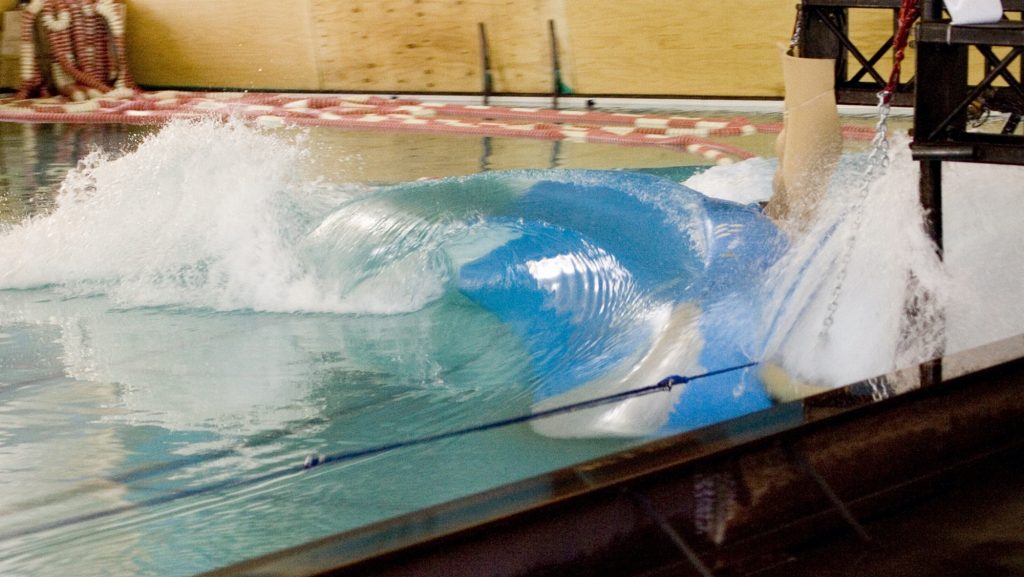
There’s a lot of interest in wave pools at the moment, but will they succeed in the long term?
Short term, right now, the key thing that has to happen is that wave pools need to make money. Surf pools won’t happen without bankers to invest and figure out how to get their money back and then how can developers leverage this to get investment. And it’s gonna be ten years until we fully come to form. The good news is that entertainment enterprises are still viable and we just have to show that these are economically viable. We have to make money. It sounds antithetical to surfing but for wave pools to move forward they have to start showing a profit. Money is just green energy – it’s an energy field and just like any energy form if it doesn’t get fed it dies.
And now there’s a lot of competition in the wave pool market.
I think it’s really good. The more competition the better. It sparks creativity. Over time you’ll see players drop out because the marketplace will decide what works. But that will take years. You’ll see consolidations, just like in any business trajectory. There’s a whole bunch of reasons why I know why SurfLoch tech’s the best. With that said, I know I’ve got to prove it. So I want to build it and let people try it and make their own decision.
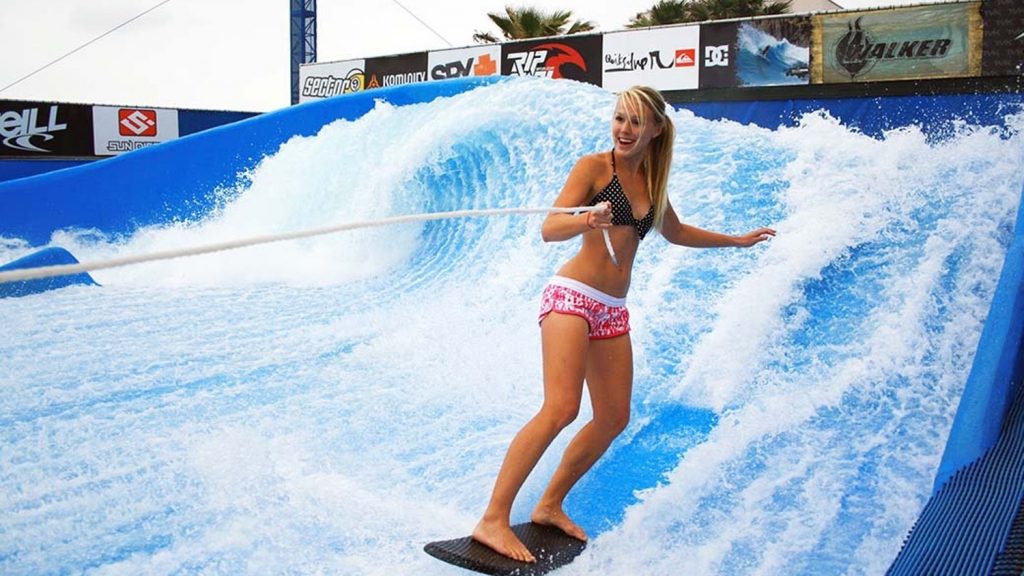
When you sold Flowrider and your share of Raging Waters you could have quit and kicked back and just surfed your life away. Why did you keep going? What drives you?
Yup I know. My wife asks that question. Luckily she’s been so understanding. I didn’t have to work. I could have had the Life of Riley. I think it’s uncompleted work. I know what the potential is and I can’t help myself. I know what’s possible. Everything that the kids can imagine and dream up, we can do now. I know it’s possible. I guarantee you. Part of that is, well, it’s really important to have a physical medium for proper social engagement and health. It’s good for society and a lot of people in the inland world don’t have access to surfing. On the environmental side, there is a significant cost to building surf pools. But in my view, it’s just another problem to solve. The problem is bigger than a small little surf pool. The pool is going to be the vehicle to power us to better energy uses. To me, it’s a vehicle to solve the problem.
Where do you see things in the future? What does the coming wave pool culture look like?
It’ll go through cycles. There will be ups and downs. And what succeeds will be driven by the successful venues being copied. But also by simultaneously looking at what fails. Because failing is just as important as succeeding. Because when you fail, you can analyse what happened and figure out what to learn from that. So we will see a lot of failures and we will see a lot of success in the future with surf pools. As a function of that, we will slowly, iteratively back our way into it. What we can learn from that is how to find a good business model and know what elements and who are the players that make it work. Those players that ultimately succeed will drive the culture. So hopefully we have players that have respect for the history of surfing and continuity. On one hand, it’s been really cool and a positive experience. And hopefully, we can continue that in the future. We’ll see. We’ll find out.
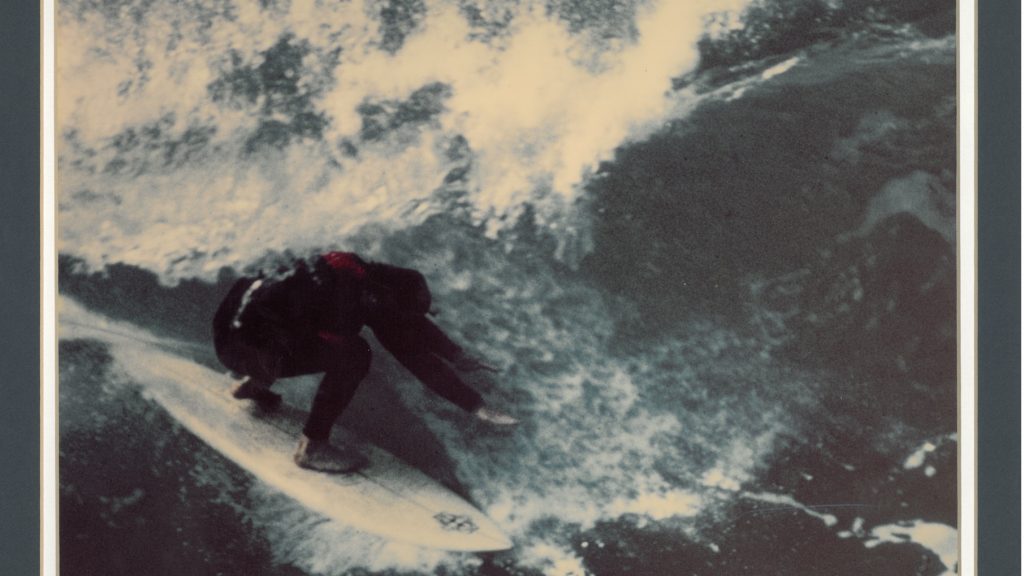
Related Coverage
